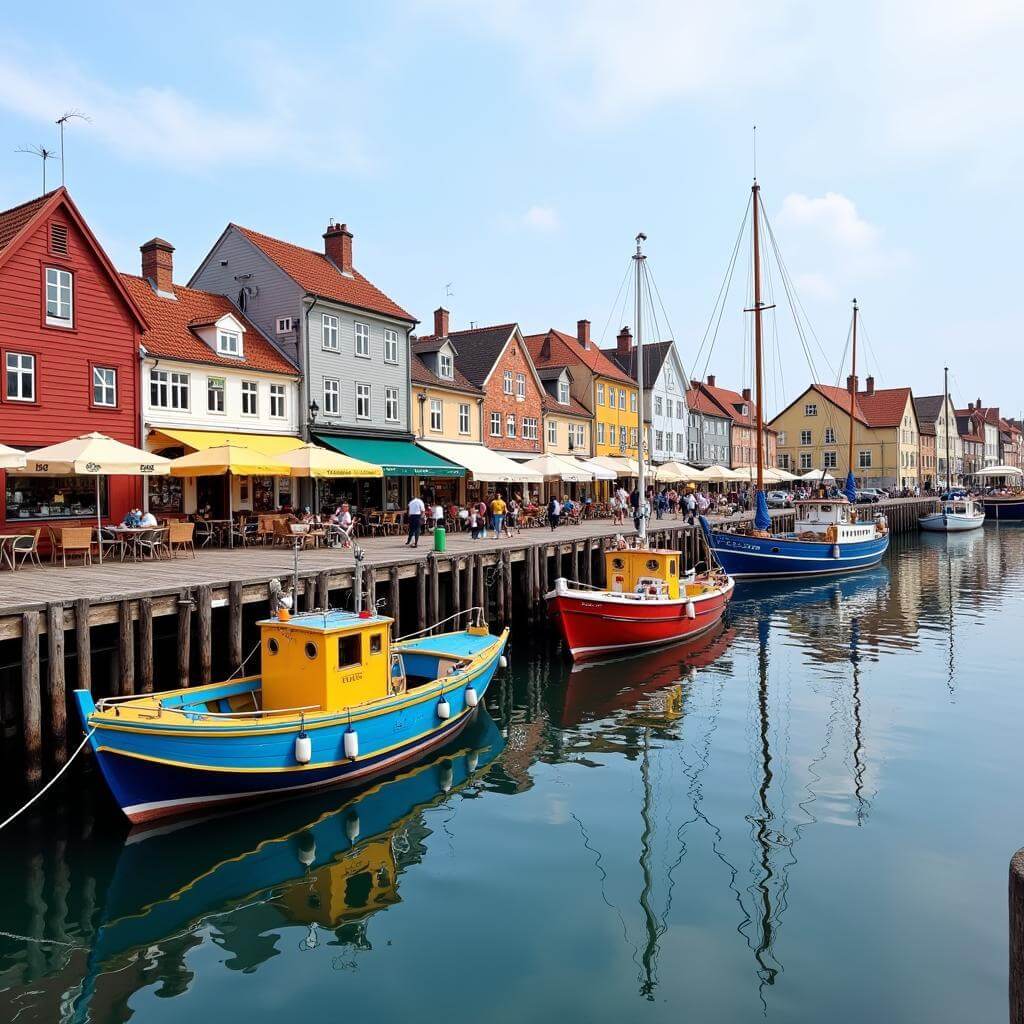The topic “describe a recent day trip you enjoyed” is a common one in IELTS Speaking tests, particularly in Part 2. This theme allows candidates to showcase their ability to narrate personal experiences, use descriptive language, and express opinions. Given its relevance to everyday life, it’s likely to remain a popular topic in future IELTS exams. Let’s explore how to tackle this topic effectively across all parts of the IELTS Speaking test.
Part 1: Introduction and Interview
In Part 1, the examiner may ask general questions about day trips or related subjects. Here are some potential questions and sample answers:
-
Do you enjoy going on day trips?
Sample answer (Band 7-8): “Absolutely! I find day trips to be a refreshing break from routine. They offer a perfect balance between exploration and convenience, allowing me to discover new places without the commitment of a longer vacation. It’s a great way to recharge and gain new perspectives.”
-
What’s your favorite type of day trip?
Sample answer (Band 8-9): “I’m particularly fond of coastal day trips. There’s something invigorating about spending a day by the sea, whether it’s exploring quaint fishing villages, walking along pristine beaches, or simply enjoying the panoramic ocean views. The combination of fresh sea air, varied landscapes, and the opportunity to sample local seafood makes it an unbeatable experience for me.”
-
How do you usually plan for a day trip?
Sample answer (Band 7-8): “When planning a day trip, I typically start by researching potential destinations within a reasonable driving distance. I consider factors like travel time, attractions, and weather conditions. I also make sure to prepare a loose itinerary to make the most of our time, but I always leave room for spontaneity. Packing essentials like snacks, water, and appropriate clothing is also crucial for a successful day out.”
Part 2: Long Turn
Here’s a sample cue card for this topic:
Describe a recent day trip you enjoyed
You should say:
- Where you went
- Who you went with
- What you did there
- And explain why you enjoyed this trip
Sample answer (Band 8-9):
“I’d like to tell you about a memorable day trip I took last month to a charming coastal town called Seahaven, about two hours’ drive from my city. I went with my best friend, Sarah, who shares my passion for exploring new places.
We set off early in the morning to make the most of our day. Upon arriving in Seahaven, we were immediately captivated by its picturesque harbor, lined with colorful fishing boats and quaint cafes. We started our day by taking a leisurely stroll along the waterfront promenade, breathing in the fresh sea air and admiring the views.
One of the highlights of our trip was a visit to the local marine life center. It was fascinatingly informative, with interactive exhibits about the region’s underwater ecosystems. We even had the opportunity to touch starfish and observe seahorses up close, which was a truly immersive experience.
For lunch, we indulged in some delectable seafood at a renowned local restaurant. The freshly caught fish and locally sourced ingredients really showcased the town’s culinary prowess. After our meal, we spent some time exploring the narrow streets of the old town, discovering hidden gems like artisanal craft shops and a charming bookstore specializing in maritime literature.
In the afternoon, we took a short boat trip around the bay, which offered breathtaking views of the coastline and the opportunity to spot some seals basking on nearby rocks. The skipper’s entertaining anecdotes about the town’s history and local legends added an extra layer of enjoyment to the excursion.
I thoroughly enjoyed this trip for several reasons. Firstly, it provided a perfect balance of relaxation and activity. The change of scenery and pace from my usual routine was incredibly refreshing. Moreover, experiencing new things with a close friend made the day even more special, as we could share our excitement and create lasting memories together.
The town’s unique blend of natural beauty, rich maritime heritage, and warm hospitality left a lasting impression on me. It was a reminder of how even a short trip can be deeply fulfilling and rejuvenating. This day out in Seahaven was not just a break from the everyday grind, but a delightful adventure that broadened my horizons and left me eager to explore more hidden treasures in my region.”
 Picturesque harbor of Seahaven with colorful fishing boats
Picturesque harbor of Seahaven with colorful fishing boats
Possible follow-up questions:
-
Would you recommend this place to others? Why or why not?
Sample answer (Band 8-9): “I would wholeheartedly recommend Seahaven to others. Its unique charm lies in the perfect blend of natural beauty, rich cultural heritage, and warm local hospitality. It offers something for everyone – from nature enthusiasts and history buffs to food lovers and those simply seeking a peaceful getaway. The town’s manageable size makes it ideal for a day trip, allowing visitors to experience its diverse attractions without feeling rushed. Moreover, its relative obscurity compared to more touristy destinations means you can enjoy a more authentic and uncrowded experience.”
-
Do you think day trips are becoming more popular? Why or why not?
Sample answer (Band 7-8): “Yes, I believe day trips are gaining popularity, especially in recent times. There are several factors contributing to this trend. Firstly, people are increasingly valuing work-life balance and seeking ways to make the most of their limited free time. Day trips offer a convenient escape without the need for extensive planning or time off work. Additionally, the rise of social media has made it easier to discover nearby attractions, inspiring people to explore their local areas more. Economic factors also play a role, as day trips are generally more budget-friendly than longer vacations, making them an attractive option for those looking to travel on a tight budget.”
Part 3: Two-way Discussion
In Part 3, the examiner will ask more abstract questions related to the topic of day trips and travel. Here are some potential questions and sample answers:
-
How do you think day trips differ from longer vacations in terms of their impact on people?
Sample answer (Band 8-9): “Day trips and longer vacations serve different purposes and have distinct impacts on individuals. Day trips offer a quick respite from daily routines, providing a burst of novelty and refreshment without significantly disrupting one’s schedule. They can be particularly beneficial for mental health, offering a change of scenery and a brief escape from stress, which can boost productivity and mood upon return.
Longer vacations, on the other hand, allow for a more profound disconnection from everyday life. They provide the opportunity for deeper relaxation and more comprehensive exploration of a destination. This extended break can lead to more significant stress reduction and potentially lasting changes in perspective or lifestyle.
While day trips might result in a series of varied experiences over time, longer vacations often create more vivid, lasting memories and can have a more transformative effect on an individual’s outlook or personal growth. However, the accessibility and frequency of day trips mean they can have a more consistent positive impact on overall well-being throughout the year.”
-
In what ways can day trips contribute to local economies?
Sample answer (Band 7-8): “Day trips can have a significant positive impact on local economies in several ways. Firstly, they bring in visitors who spend money on local attractions, restaurants, and shops, providing a boost to small businesses. This influx of tourists can help sustain employment in the hospitality and service sectors.
Moreover, day trippers often seek out unique local experiences, which can encourage the preservation and promotion of local culture and traditions. This, in turn, can lead to the development of new tourism-related businesses and services.
Day trips can also help distribute tourism benefits more evenly across a region, as visitors explore lesser-known areas. This can be particularly valuable for rural or suburban communities that might not typically attract overnight stays.
Additionally, the lower environmental impact of day trips compared to longer-distance travel can contribute to more sustainable tourism models, potentially leading to long-term economic benefits for communities that prioritize eco-friendly practices.”
 Day trippers boosting local economy at a market
Day trippers boosting local economy at a market
-
Do you think virtual day trips (using technology like VR) could become popular in the future? Why or why not?
Sample answer (Band 8-9): “The concept of virtual day trips using technologies like VR is indeed intriguing and has the potential to gain popularity, albeit with certain limitations. On the positive side, virtual day trips could offer unprecedented accessibility, allowing people with physical, financial, or time constraints to ‘visit’ places they might never experience otherwise. This could be particularly valuable for educational purposes, enabling students to ‘explore’ historical sites or natural wonders from their classrooms.
Moreover, virtual trips could be an eco-friendly alternative to physical travel, reducing carbon footprints associated with transportation. They could also help manage overtourism by allowing people to ‘visit’ popular destinations without contributing to overcrowding or environmental degradation.
However, I believe virtual day trips will complement rather than replace physical travel. The sensory experience of being in a new place – the smells, the ambient sounds, the feel of the air – is difficult to replicate virtually. Additionally, the spontaneous interactions and serendipitous discoveries that often make day trips memorable are hard to program into a virtual experience.
In the future, we might see a hybrid model emerging, where people use virtual day trips for initial exploration or revisiting memories, while still valuing real-world travel for its irreplaceable authenticity and the holistic experience it provides. The technology could serve as a tool for pre-trip planning or post-trip reminiscing, enhancing rather than replacing the traditional day trip experience.”
Key Vocabulary and Phrases for High Scores
-
Invigorating (adjective) /ɪnˈvɪɡəreɪtɪŋ/ – making one feel strong, healthy, and full of energy.
Example: “The invigorating coastal walk left us feeling refreshed and energized.” -
Quaint (adjective) /kweɪnt/ – attractively unusual or old-fashioned.
Example: “We stumbled upon a quaint little café in the heart of the old town.” -
Panoramic (adjective) /ˌpænəˈræmɪk/ – with a wide view surrounding the observer.
Example: “The hilltop offered panoramic views of the entire coastline.” -
Captivated (verb) /ˈkæptɪveɪtɪd/ – attract and hold the interest and attention of; charm.
Example: “We were captivated by the town’s rich history and architectural beauty.” -
Delectable (adjective) /dɪˈlektəbl/ – delicious, highly pleasing to the taste.
Example: “The local restaurant served delectable seafood dishes.” -
Immersive (adjective) /ɪˈmɜːrsɪv/ – providing, involving, or characterized by deep absorption or immersion in something.
Example: “The marine life center offered an immersive experience of underwater ecosystems.”
Examiner’s Advice
To achieve a high score in the IELTS Speaking test, particularly when describing a day trip:
-
Use varied vocabulary: Incorporate a range of descriptive words and phrases to make your account vivid and engaging.
-
Structure your answer: For the long turn, organize your thoughts logically, covering all points in the cue card.
-
Provide specific details: Instead of general statements, offer concrete examples and personal anecdotes to illustrate your points.
-
Show enthusiasm: Use intonation and emphasis to convey your enjoyment of the experience.
-
Practice fluency: Work on speaking smoothly without long pauses. Use linking words to connect your ideas.
-
Develop your ideas: In Part 3, aim to provide thoughtful, well-developed responses that demonstrate critical thinking.
-
Stay on topic: While it’s good to elaborate, ensure your answers remain relevant to the question asked.
Remember, regular practice with a variety of topics will help you feel more confident and perform better on test day. Consider recording yourself and listening back to identify areas for improvement. You might also find it helpful to describe a museum you visited and enjoyed or describe a special day you spent with friends for additional practice with similar themes.


